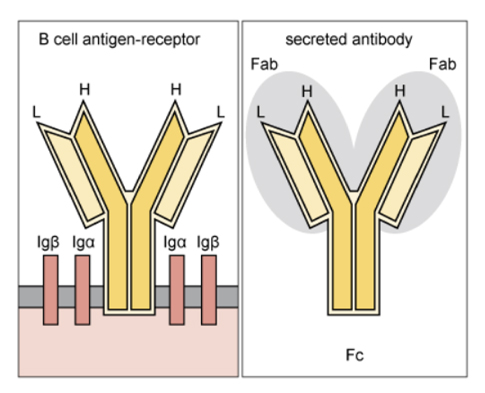1.6 B cells and antibodies
B cells recognise antigens through their cell surface receptor for antigen, which is in fact a membrane-bound form of antibody. It is called the B cell receptor (BCR), and like T cells, each individual B cell has just one specificity – meaning that it can recognise a very limited range of antigens. However, taken as a whole, the entire population of B cells can recognise an enormous range of antigens.
-
What happens to a B cell if it becomes activated following contact with the antigen it recognises?
-
It divides and differentiates into plasma cells, which secrete antibody.
The BCR and the secreted antibody are structurally very similar, and antibodies derived from a single clone of B cells will all have the same antigen-binding specificity. The BCR is a cell surface antigen receptor and is associated with molecules that signal cell activation (Igα, Igβ). The secreted antibody lacks the transmembrane segment that anchors the BCR in the plasma membrane of the B cell. Figure 5 compares the cell surface BCR and secreted form of antibody.
Secreted antibodies are also called immunoglobulins (Ig) and they come in a number of different classes. Three examples are IgG, IgM and IgA, which you will learn about later in the course. But first, let’s see how B cells become activated to divide and differentiate into plasma cells.

